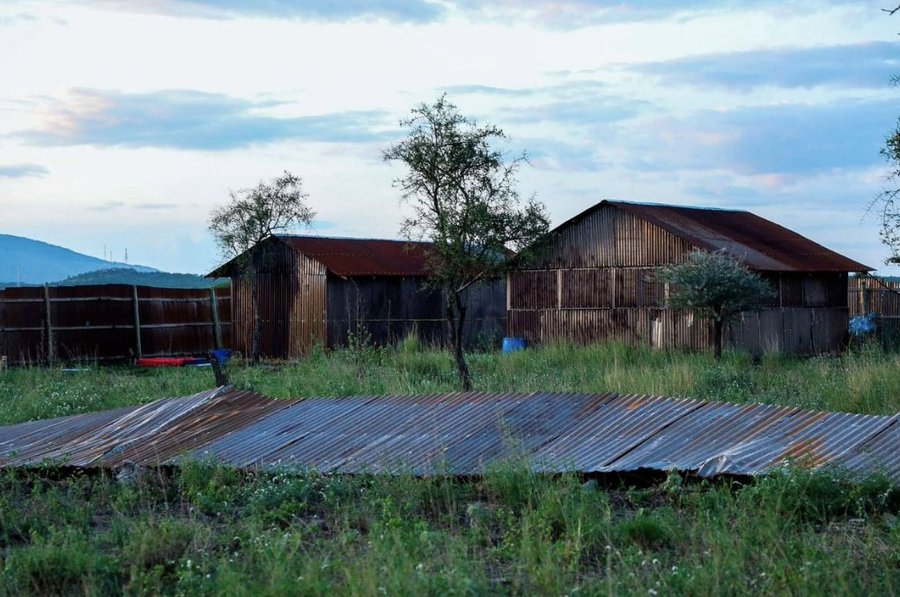The trial of six people, including a member of a notorious Mexican drug cartel, in a Kenyan court is highlighting the changing nature and corrosive influence of the illicit drug business in East Africa.
Kenyan authorities arrested the six last year during a raid on a makeshift methamphetamine lab in the countryside near Namanga, a community on the border with Tanzania. Among those arrested were three Kenyans, two Nigerians and Israel Alvarado, who law enforcement authorities say is a member of the Jalisco New Generation Cartel, one of Mexico’s most dangerous criminal organizations.
The Namanga lab was the first confirmed large-scale Mexican cartel operation in Kenya. The country’s Directorate of Criminal Investigations reported that the lab was not yet operational when it was raided.
Kenya and other East African countries have long served as transit points for drugs moving from production facilities in Central Asia to markets in Europe and North America. However, over the last 15 to 20 years, drug traffickers have begun to focus more on drug users in Africa — particularly those who use meth.
After taking root in the Western Cape region of South Africa two decades ago, meth has spread to the point that every nation in East and Southern Africa has a domestic market for it, according to Jason Eligh, a senior expert on drugs and drug markets at the Global Initiative Against Transnational Organized Crime.
“As an international community, we vastly overestimate what we think we know about what is going on in the drug markets in the region,” Eligh told ADF in an interview. “We still think of traditional heroin shipments through the region to places afar, whereas the region itself has, over the last 15 years, become a massive consumer of a variety of illicit drugs.”
While remote, the Namanga lab sat along traditional trafficking routes and had easy access to seaports and airports in Kenya, Tanzania, and Uganda, Eligh noted.
Regional law enforcement reported that the lab was behind several layers of fencing and was covered in corrugated metal. The owner claimed she was going to use the property to produce poultry.
“We went there, we found the place. And something that hit us was the watchman at the gate,” Hassan Elema, a sub-county police commander for Kajiado County, told NTV Kenya. Inside, police found barrels of chemicals and equipment to make crystal meth.
Eligh suggested the operation may have been akin to a fast-food franchise, with Mexican cartel members present to train the Nigerians and Kenyans on the techniques for producing the drug. Mexican cartels have set up similar labs elsewhere on the continent.
International investigators warn that drug operations like the one broken up in Namanga are both a source and a beneficiary of corruption in Kenya and beyond. The amount of money involved in the drug trade can easily cause port inspectors, law enforcement and the justice system to look the other way.
“The question is, ‘Do drug traffickers corrupt, or do corrupt environments attract drug traffickers?’” Eligh said. “I would suggest it’s probably the latter in many cases.”
Researchers with the Africa Organized Crime Index put Kenya at the top of East African countries for criminality and rank it fourth overall among African countries. The index shows a rising criminality among the trade in synthetic drugs such as meth, and the presence of criminal networks in the country. On the plus side, the index found that Kenya is improving its legal system as well as its joint operations with other countries to rein in criminal activity.
One area in which the index downgrades Kenya’s government is its court system, which is now processing the six people arrested for drug trafficking in Namanga. More than six months after their arrest, the trial was delayed last month because court officials could not find a Spanish interpreter for Alvarado.
Observers say Kenya’s court system is inefficient, overwhelmed with cases, and, in some instances, corrupt. Poor evidence collection by law enforcement also weakens the government’s hand at trial. As a result, drug traffickers often go free.
“Drug traffickers use loopholes in the criminal justice system to evade prosecution and sentencing, while the proceeds of crime are used to bribe corrupt officials or fund lengthy court battles,” wrote analyst Halkano Wario for the Institute for Security Studies in 2024.
Wario called for Kenyan authorities to prioritize drug trafficking cases as a way to maintain faith in the justice system.
“The repeated arrest, failure to prosecute and release of well-known suspects undermines trust in the justice system and costs the state time and resources,” he wrote.

